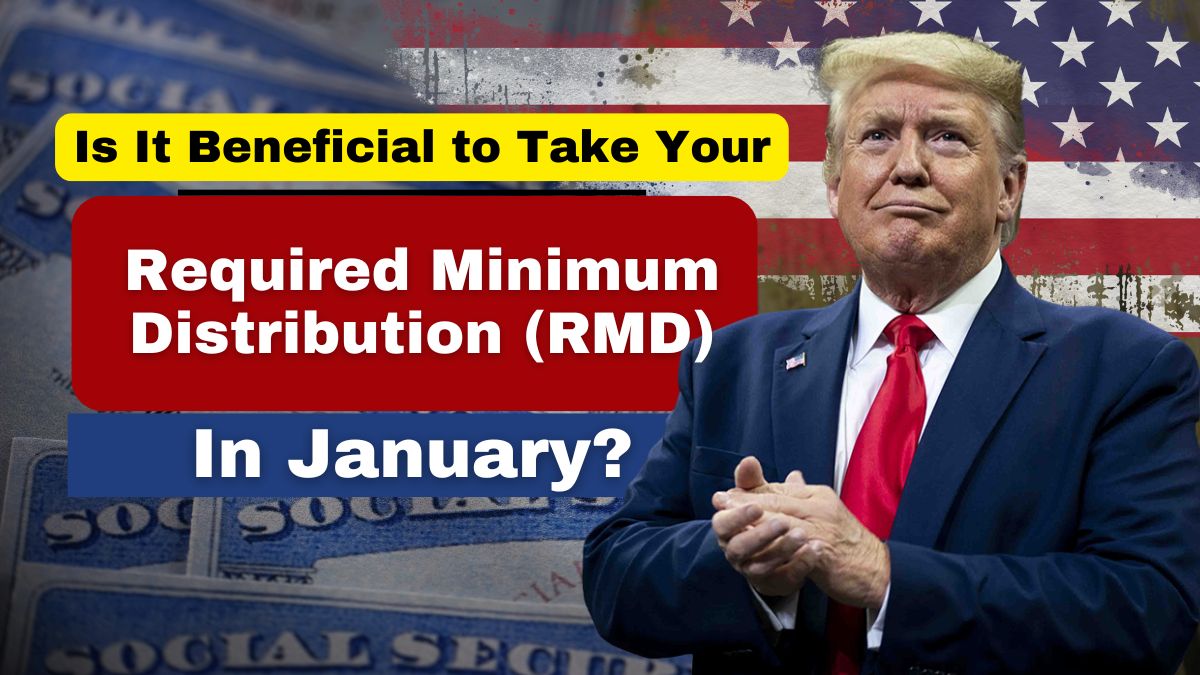Finance
Is It Beneficial to Take Your Required Minimum Distribution (RMD) in January?

Many individuals diligently contribute to retirement accounts such as a 401(k) or IRA throughout their working years. The primary advantage of these plans is the ability to deduct contributions from taxable income in the year they are made, potentially increasing retirement savings. Additionally, investments within these accounts grow tax-deferred until withdrawals begin.
However, the government eventually collects taxes on these funds, which is why Required Minimum Distributions (RMDs) come into play. Once retirees reach 73 years old, they must begin withdrawing a minimum amount annually. Those who inherit an IRA from someone already subject to RMDs must also comply with withdrawal requirements.
While most retirees opt to take their RMDs toward the end of the year, there may be distinct advantages to withdrawing as early as January. Below, we explore the factors that influence RMD calculations and why early withdrawals could be beneficial.
Understanding How RMDs Are Calculated
Before deciding when to take your RMD, it is crucial to understand how the government determines the required amount. The Internal Revenue Service (IRS) calculates RMDs based on two key factors:
- The total balance of your retirement account(s) as of December 31 of the previous year
- Your age during the current year
The IRS provides a life expectancy table, which estimates the average lifespan based on your age. This factor determines how much must be withdrawn annually.
If your spouse is more than 10 years younger than you and is the sole beneficiary of your account, a separate joint life expectancy table is used. This results in a lower RMD since the withdrawals are spread over a longer time frame.
Most financial institutions calculate your RMD for you at the beginning of each year, but understanding the process allows for better planning.
Benefits of Taking Your RMD in January
For those looking to minimize their RMDs over time, withdrawing funds early in the year can be a strategic move. Here’s why:
Lowering Future RMDs
The balance of your retirement account fluctuates based on investment gains or losses. If you withdraw your RMD in January, the total balance of your account will be lower for the rest of the year. This means the next year’s RMD calculation will be based on a smaller total, reducing the required withdrawal amount.
Passing on Tax-Efficient Assets to Heirs
If your RMD exceeds your financial needs, an early withdrawal allows you to reinvest the excess funds into a taxable brokerage account. This approach has a major advantage—when you pass away, your heirs will receive these assets with a step-up in cost basis, significantly reducing their capital gains tax liability.
In contrast, if they inherit an IRA, they will be required to take RMDs from the inherited account and pay income taxes on the distributions. Additionally, unless they qualify for exceptions, they must deplete the inherited IRA within 10 years.
| RMD Withdrawal Timing | Impact on Taxes & Inheritance |
|---|---|
| January Withdrawal | Reduces year-end account balance, lowering future RMDs, allows tax-efficient reinvestment |
| End-of-Year Withdrawal | May keep RMD amounts higher in the long run, leading to larger tax obligations |
Roth Conversions: Another Reason to Withdraw RMDs Early
Another compelling reason to take RMDs early in the year is that you cannot make Roth conversions until you have taken your full RMD. With tax rates currently at historic lows and scheduled to increase after 2025, this could be one of the last opportunities to lock in lower tax rates by converting assets to a Roth IRA.
Taking RMDs in January allows retirees to immediately start converting additional funds from a traditional IRA to a Roth IRA, reducing the future tax burden on withdrawals. Unlike traditional retirement accounts, Roth IRAs are not subject to RMDs, making them a powerful tool for estate planning and tax optimization.
Should You Take Your RMD Early?
For retirees who depend on their RMDs to cover daily living expenses, the timing of the withdrawal may not have a major impact. However, there are key advantages to taking RMDs in January, including:
- Immediate access to cash for emergency situations
- Reduced stress for beneficiaries, as the RMD is already satisfied
- More strategic tax planning through early reinvestment or Roth conversions
On the other hand, if you plan to spend the full RMD, the timing may not significantly impact your overall financial strategy.
Deciding when to take your Required Minimum Distribution (RMD) is an essential aspect of retirement planning. While many retirees wait until the end of the year, taking RMDs in January can help lower future tax burdens, allow for strategic Roth conversions, and provide financial flexibility.
For those who wish to pass on assets to heirs in a tax-efficient manner, early withdrawals and reinvestment in taxable accounts can be beneficial. However, the best strategy depends on your individual financial goals and needs. Consulting with a financial advisor can help tailor an approach that maximizes your retirement savings while minimizing unnecessary tax liabilities.
FAQs
What happens if I don’t take my RMD?
If you fail to withdraw your required RMD, you could face a 50% penalty on the amount not withdrawn. It’s crucial to ensure compliance to avoid unnecessary tax burdens.
Can I reinvest my RMD into another retirement account?
No, RMDs must be withdrawn and cannot be reinvested into tax-advantaged accounts. However, they can be placed in a taxable brokerage account to continue growing.
Do Roth IRAs have RMDs?
No, Roth IRAs are not subject to RMDs, making them a valuable estate planning tool.
-

 Government Aid3 months ago
Government Aid3 months agoFebruary SSDI Payments: Only This Group Will Receive the First Checks of Next Month
-

 Finance2 months ago
Finance2 months agoRare Bicentennial Quarter Worth $15 Million
-

 Government Aid2 months ago
Government Aid2 months agoSocial Security Announces 2025 Check Increase, But a 23% Reduction is Expected Soon
-

 Finance3 months ago
Finance3 months agoThe Lincoln Wheat Penny Worth $5 Million- Still Circulating Today
-

 Finance3 months ago
Finance3 months agoRare Coins: The 1964 D Lincoln Penny Errors You Should Know About
-

 Government Aid2 months ago
Government Aid2 months agoIRS to Distribute Stimulus Checks to Millions- Find Out How to Claim Yours
-

 Finance3 months ago
Finance3 months ago1970-D Kennedy Half Dollar- A Rare Coin Worth Over $150,000 Still in Circulation!
-

 Government Aid3 months ago
Government Aid3 months agoThe Complete February SSDI Payment Schedule: Discover When You’ll Receive Your Disability Benefits









